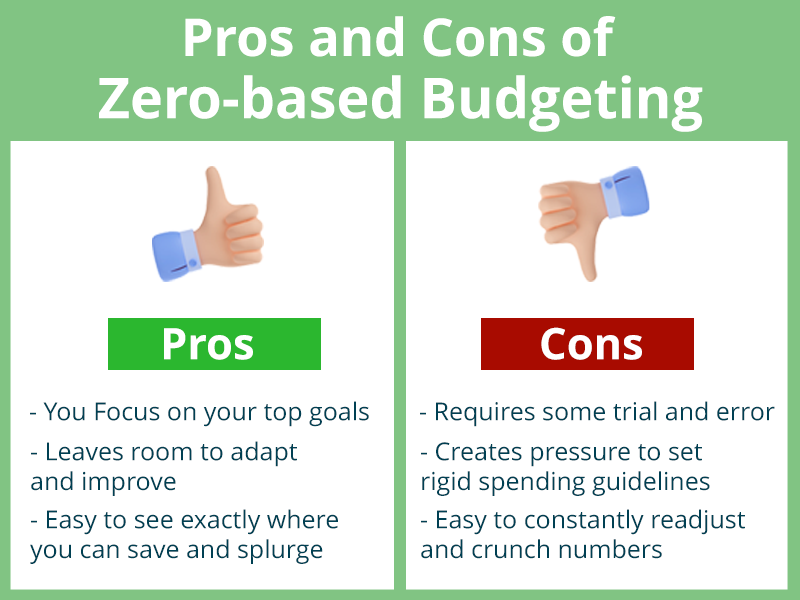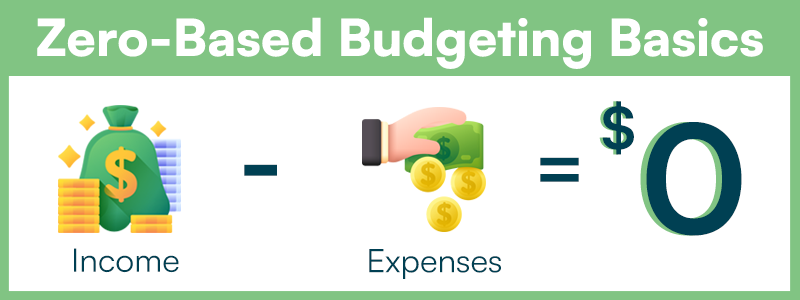Introduction
A zero-based budget is a method of budgeting where all expenses are justified. The term “zero-based” refers to the starting point for each line item in the budget, which is at zero dollars. In contrast, budgets that don’t use zero-based accounting start with an amount of money used in the previous period and add any new expenses incurred since then. A zero-based budget starts from scratch every month or quarter.
A zero-based budget is a new way of looking at the budget.
The traditional approach to creating a budget is starting with last year’s spending and adjusting for inflation or other factors. This can lead to an unrealistic picture of your actual needs because it assumes that you will be spending the same amount in all areas of your life next year as you did this year-even though that might not be true! A zero-based budget starts from scratch every time, so it’s much more accurate at reflecting reality.
A zero-based budget also improves transparency because it forces everyone involved in making decisions about how money should be spent (including yourself!) to justify each expense before approving it. This helps prevent waste by ensuring that everyone understands why certain purchases are being made; if they don’t see value in something, they won’t approve funding for those purchases–which means less waste!
It’s a tool used to bring accountability and transparency.
It’s a way to ensure that the budget is used appropriately, efficiently, and effectively.
One of the biggest benefits of zero-based budgeting is that it encourages everyone on your team to consider what they need from their job before asking for any resources. For example: If you’re an accountant who works for an online retailer selling products online and offline at brick-and-mortar locations across America, then your business needs access to data from each store location so that you can analyze sales numbers by region or state (or even city).

You might be tempted to ask for enough money every month so that you can buy another computer for storing all this data locally instead of sending it back up into headquarters where someone else would have access too but doing so wouldn’t align with company goals because there would be no way for anyone else besides yourself using those computers.
The budget process starts over every year instead of being built on the previous year’s spending levels.
The budget is designed to bring accountability and transparency while ensuring that all departments have the necessary resources to do their job.
This approach creates an environment where you can see exactly where your money is going at any given time, allowing you to make better decisions about how much money needs to be spent on each item your business produces. This system also makes it easier for employees within each department or area of responsibility (AOR) to track their metrics and identify areas of improvement over time so they can become more efficient with their workflows or processes as needed without having too much overhead involved in doing so
The first step is creating a list of all the activities, departments, and programs that make up your organization.
This will help you see where your money is going and whether any areas need to be funded. You can also use this information to identify opportunities for cost savings by comparing what you spend on different programs against their results.
The second step is to prioritize those items by value.
Prioritization is important for effective budgeting, as it helps you determine which activities and programs are most important to the organization. This can be done by listing all activities, departments and programs in order of importance (based on their impact on the mission). Once this list has been created, select the top three items (or however many you feel comfortable with) that greatly affect your organization’s goals and objectives.
The third step is to assign costs to each item.
For example, if you’re planning a vacation, you could visit the beach. The cost of visiting the beach could be divided among your family members who are on vacation with you (and even those who aren’t). This would allow for everyone’s preferences and needs to be considered when deciding how much should be spent on transportation or food at the beach.
The same principle applies when assigning costs for any other expense. Whether it be school supplies or new clothes for work outfits, there should always be an adequate amount set aside so that no one feels left out because they can’t afford something they want or need but don’t receive from someone else in their household.

Once you’ve done this process, you can see where there are costs that aren’t producing results or where there may be redundancy in what you’re doing.
You can then look at ways to cut costs and increase efficiency. For example, if you have two people working on a project with similar roles and responsibilities, one person could do both jobs. Or one of those roles could be eliminated because it isn’t necessary anymore (e.g., if all your clients are using email now instead of faxes).
Once we’ve identified areas where we can cut costs and increase efficiency by eliminating waste from our business model–which is another way of saying “stop doing stuff that doesn’t add value”–we’ve created space for ourselves so that when something comes along next month or next year that needs funding from our budget but doesn’t fit neatly into any category currently on our spreadsheet (for example: “customer service training”), we’ll have money available because we weren’t wasting cash on other things.
Conclusion
Zero-based budgeting is a great tool if you’re looking for a way to improve your organization’s finances and accountability. It gives you a new perspective on what you’re spending money on and allows you to make smarter decisions about how much money should be allocated toward each activity or department within your organization.







